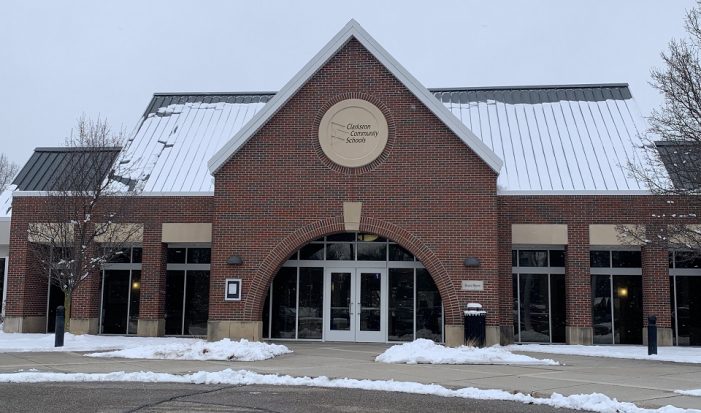By Matt Mackinder
Clarkston News Editor
INDEPENDENCE TWP. — During a lengthy presentation to the Clarkston Community Schools Board of Education at the Jan. 22 meeting, upgrades and ideas for improved safety measures across the district were presented to the board by four CCS employees.
“This is a critical element, job No. 1 in everything we do to assure when our students come to Clarkston schools, including our own children, is their safety, before they can ever consider opening their first book, having opportunities to learn,” said Superintendent Dr. Shawn Ryan. “To that end, it’s not as simple as having locks on the doors as it might have been 20-30 years ago or proper preparedness, everything we do with local law enforcement.”
No action was taken at the meeting as this was simply a presentation, and another update is planned for later in the school year.
Staci Puzio, director of student growth, well-being, and community partnerships, hit on the mental health aspect of safety, explaining how staff are trained in CSTAG (Comprehensive School Threat Assessment Guidelines) in the event of an emergency.
“It is about early intervention,” said Puzio. “CSTAG has either a transient threat that says it’s not serious, but it might be something where a kiddo says something that is not appropriate, and they need to learn from that. Or it’s substantive, where it does pose continuous risk to somebody else and there is something that we need to do with that.
“There is an impact on student discipline where interventions may need to take place before a student can come back or is it even appropriate for that student to come back.”
Puzio also explained the updated TECIP (Traumatic Event Crisis Intervention Plans), which entails restorative practice work (elementary and secondary), partnerships with Easterseals and Clarkston Area Youth Assistance, proactive supports built into the curriculum, and updated mandatory reporting guidelines where staff need to be trained or retrained.
Wes Goodman, executive director of operations for the district, said physical improvements will start as soon as spring break, including secure entrances, new locks, new doors at the high school main entrance, a camera audit, building audit, walkie talkies, night lock shades, security film, and security mapping.
“The high school is now 25, 26 years old,” said Goodman. “The front entries have a lot of traffic and are getting tired. (At the November board of education meeting) you (the school board) approved bulletproof glass replacing all those doors with heavy-duty hardware.”
Another element of school safety is active shooter training. Staff get annual ALICE (Alert, Lockdown, Inform, Counter, Evacuate) training and simulation training is provided to new teachers. Students get trained twice a year. “Stop the Bleed” training is also provided where staff know how to dress open wounds and keep the bleeding to a minimum.
“All of our staff as part of our training, we’ve had all of them go around and do an overhead announcement, using the phone to do building-wide announcements,” said John Lucido, assistant superintendent of administrative services. “They’ve all practiced doing that. Another thing we’ve done is that there are online resources for parents on the safety page on the district website.
Risks with cybersecurity was also discussed and fixes include two-factor authentication, “Securely Yours” network monitoring through Oakland Schools, an AirGap backup server, and email training with Infosec phishing
“The first line of action for a cybersecurity attack is that a criminal will attack your backups,” said Angela Harrison, network administrator. “They don’t want you to be able to recover from the incident that they are trying to do. The AirGap server takes a copy of the backups and disconnects from the network.”
The district’s safety committee’s evaluations and recommendations include renewing the security company audit (evaluation of safety protocols, threat assessment process review, training process review), and evaluate the addition of a fourth liaison officer, safety director, and the use of armed/unarmed security officers.
“Having another audit is, to me, non-negotiable,” said Ryan. “A safety director would be a point person for an entire new string of resources that the school district doesn’t have on a daily basis. Concerns that go along with that are finding the right individual. I feel like if you have the wrong individual, we would be less safe.”
Ryan said he is also leery of having armed security officers.
“When you look at an elementary school with an armed individual at the door, I don’t know if it says the right message right now in terms of what we have with threats that we experience day to day,” Ryan said. “I’m not saying it’s not a good idea, I just don’t have the same confidence that I do with our resource officers, their training, their attachment.”
File photo: Matt Mackinder

